27-29 March
Fethiye
We were glad to have two nights in Fethiye, which appeared to us as a small town with a large marina. After checking in at our hotel, La Farine, we went in search of a restaurant. The nearby Old Town was pretty dark and deserted with only cocktail bars and nightclubs open, so we plumped for a restaurant on the waterfront, but indoors, as it was distinctly chilly.
Our hotel doubled as a patisserie at its entrance, where we had breakfast comprising a mixture of European and Turkish food. We set off to walk to the bus station, to do a recce of the route. Now we realised that Fethiye was a large town. Although it is accustomed to dealing with English-speaking visitors, we were unable to pick out peppermint tea in the supermarket, without the help of our smartphones! (…and no, the pictures on the label didn’t help.)

Hotel Entrance 
Marina View
On our walk, we stopped at various mobile phone vendors en route to see if we could purchase a Tourist SIM card to get mobile data on our phones. But the shortest contract was for an uneconomical 3 months, so we decided to manage without (adding to the challenges we would face going forward, …. or is it back to an earlier time without GPS?!) It turned out to be a long hot walk to the bus station, unsuitable for carrying our heavy rucksacks. We did however get the measure of the town and enjoyed a coffee and snack on the way back.
We spent a happy hour or so planning our route to Istanbul via Pamukkale (more of later) and retraced our steps to a very pleasant coffee shop near the Old Town for a delicious dinner. The kitchen was open, and we were treated to a veritable show by the large, bearded figure of the Chef, with a busily bustling Sous-chef. He wheeled around, flipping lids, squeezing bottles, deftly placing shavings with long tweezers – eyebrows knotted in concentration and body poised in athletic prowess.
Journey
Our bus was at 09.30 so we went for a slightly early breakfast, where we were ignored until the requisite opening time (despite that the hotel reception suggested we could take breakfast a bit early!). We took a taxi to the bus station which took all of 12 minutes and only cost us £3.
We had booked the two front seats on the mini-bus, and had plenty of room despite many joining and leaving en route.
The bus was a 4-hour journey to Denizli, and we changed drivers twice. We enjoyed the drive through the high passes of the mountains on winding, hairpin roads, passing a woman herding her goats and a sign requiring snow tyres. We saw snow on the mountain tops again.
We were travelling through rural Turkey, much farming and simple lifestyle. We stopped at Çameli bus station, where we snatched a quick instant coffee with milk for £1.50 for both of us and boy did it hit the spot. We descended to the plain through olive and fruit trees until we reached Denizli which was surprisingly large, with a cable car up the mountainside.
We alighted at the huge bus station looking for bay no. 3 for a mini-bus to Pamukkale; there, they said “hurry, hurry…!!” to bay 69, where there was indeed a minibus for Pamukkale, with people aboard. We managed to buy tickets with the help of a passenger who spoke some English (67 pence each) and the bus set off shortly afterwards, leaving late passengers to await the next bus as ours was full.
It took all of 20 minutes to reach Pamukkale, and the same helpful passenger advised us which stop to request, which would be nearest to our hotel. We arrived at 2.30pm with the whole afternoon to explore the travertines.
We congratulated ourselves on a journey well travelled.
Pamukkale
Lodgings in Pamukkale are not salubrious, nor was our hotel (but it did have hot water). However, we had only booked it a day earlier, and it had pole position with a free view over the astonishing white landscape of travertines, so we were happy. From our vantage point we could see the dark threatening clouds; ah we hadn’t thought to allow time to avoid bad weather.
Located on a geological fault line, the hot springs at the top of the hills are saturated with minerals, which have, over the millennia, hardened into a white rock covering. These are so extensive that it gives the illusion of a glacier. It is also known as the ‘cotton wool’ hills.
Intrepidly, we set off and were fortunate to escape the rain. The climb up was fun and empty of other people; first we had to negotiate water running over the rock face, and then find a path avoiding pools of water, but it was a joy experiencing the soft and hard deposits. It was busier at the top, where the main entrance is.
Due to the hot springs, a vast ancient city thrived here since the seventh century BC; the later city of Hierapolis reputedly housed Anthony and Cleopatra, with the hot spring baths named after the Egyptian queen.
The mineral baths have, for the optimistic, healing powers, so Lynne decided to have a go at healing her sore hip in the baths. Hot it was, in the water. Cold it was, out of the water… Peter decided to stay out, to take the necessary pictures (ahem).
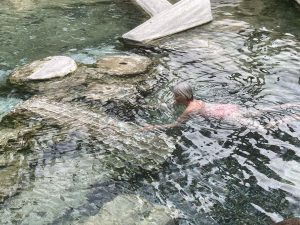
For Peter, the highlight was the extremely well preserved Roman amphitheatre with fantastically restored on-stage columns, structures and friezes. Incredibly, the theatre could originally seat 15,000 – impressive, even though they were smaller in those days. It offered Peter a chance to declaim his final Shakespearian monologue – ‘To be or not to be, that is the question…’
However, we both were blown away by the Plutonium, where the God himself, with Cerberus, the three-headed dog, and serpents guarded the gates of the underworld. Beneath the well preserved statue was an opening, where sulphuric gases escaped, and bulls were offered to the gods, asphyxiated in front of rapturous crowds.

To be…? 
Plutonium
Braving the biting cold, we escaped our threadbare room and found a nice warm restaurant, the Kayas. Practically empty, with a couple of mischievous dogs, we were well looked after by a pleasant young man, happy to exercise his (already good) English. Lovely Turkish meal, well looked after, nice and warm, entertainment by dogs – what was not to like?
Journey
We were anxious to catch the 12.20 train from Denizli so we would arrive in Selçuk in daylight, making it easier to find our hotel.
We lucked out! We had an early mediocre breakfast with a wonderful view over the white hills, and set off with our rucksacks in the cold morning drizzle. Reaching the spot where we would have to wait for the bus, it appeared simultaneously! After waving frantically, it stopped and on we hopped, happy to be out of the rain.
Approaching the Denizli bus terminus, Lynne managed to figure out the location of the railway station – and we were let off the bus with vague hand gestures ahead – “Tren – tren”!
Knowing how much to trust ‘well meaning advice’, Peter’s heart sank. Off we trudged, with heavy traffic swooshing by us in the rain… Happily, there it was – unbelievably, with an even earlier train at the platform and a ticket office without a queue!
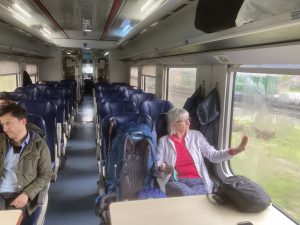
Minutes later (and just in time), we sat comfortably on the regional diesel train to Izmir, stopping at our destination, Selçuk, fare £3.40 each. Of course, having caught a different train than planned, we had no idea when we would arrive at our destination. We crossed a fertile plain, with vineyards, fruit trees, surrounded by mountains, passing through a high tunnel to descend to our destination, with the pillars of Ephesus clearly visible in the valley below. Having studiously examined Google maps back at the hotel, we relied on screenshots on our mobiles to find or hotel, named ‘in Ephesus Hotel and Art Gallery’.
Another successful day’s journey!
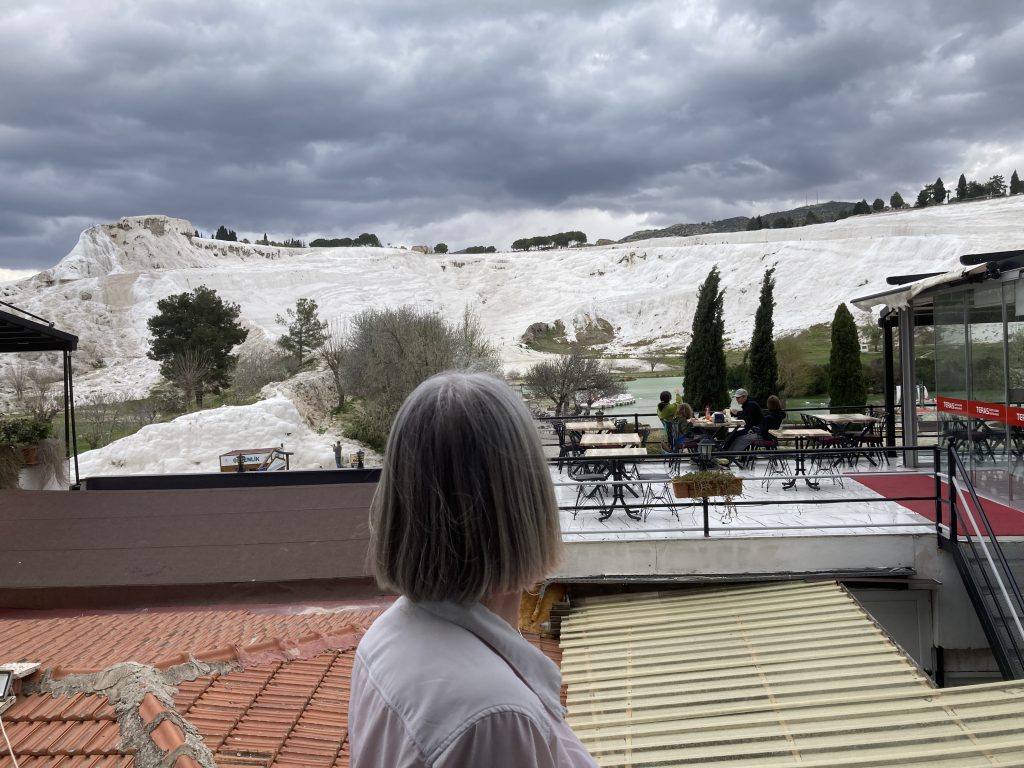
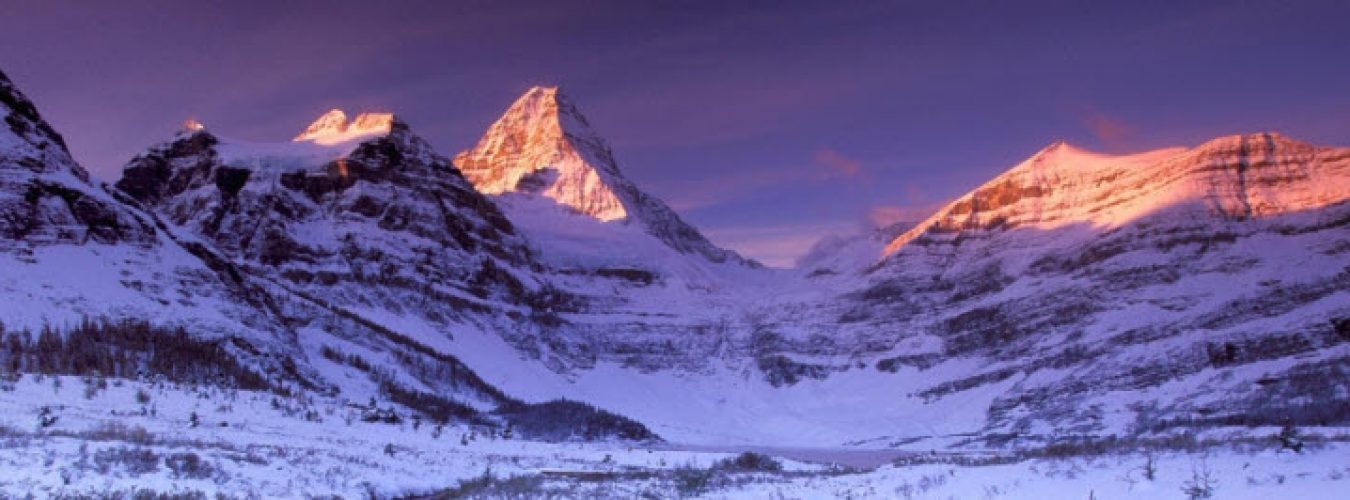
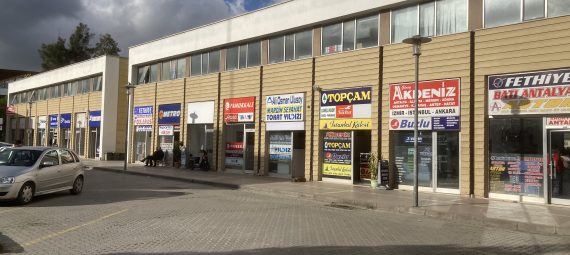
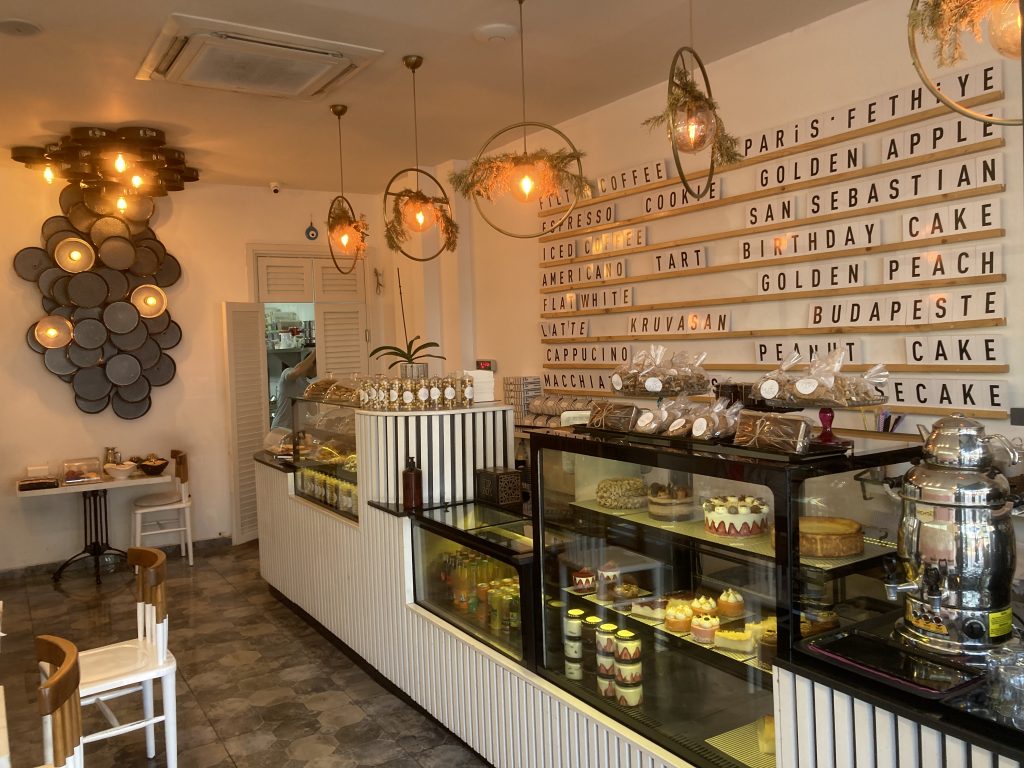
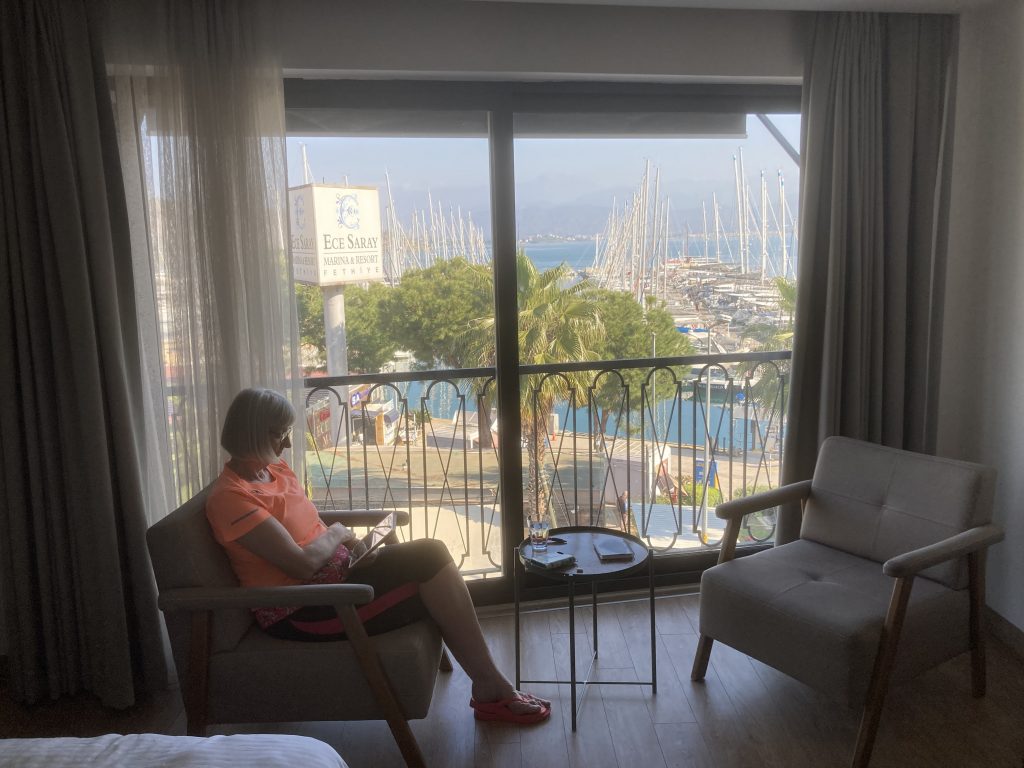
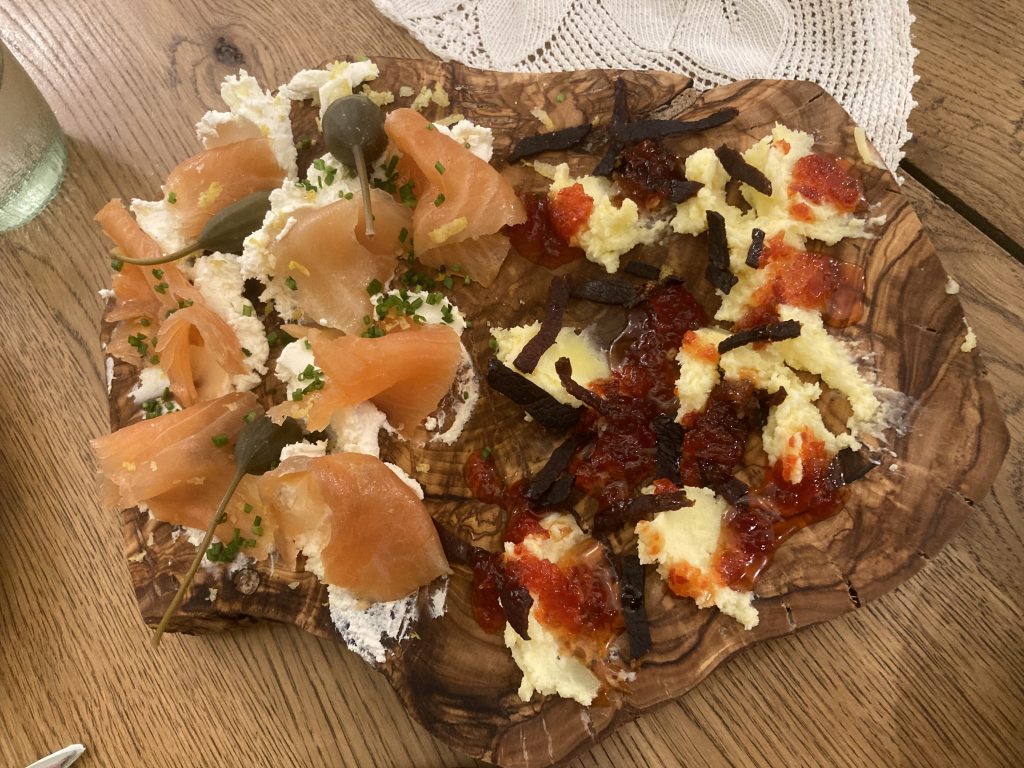

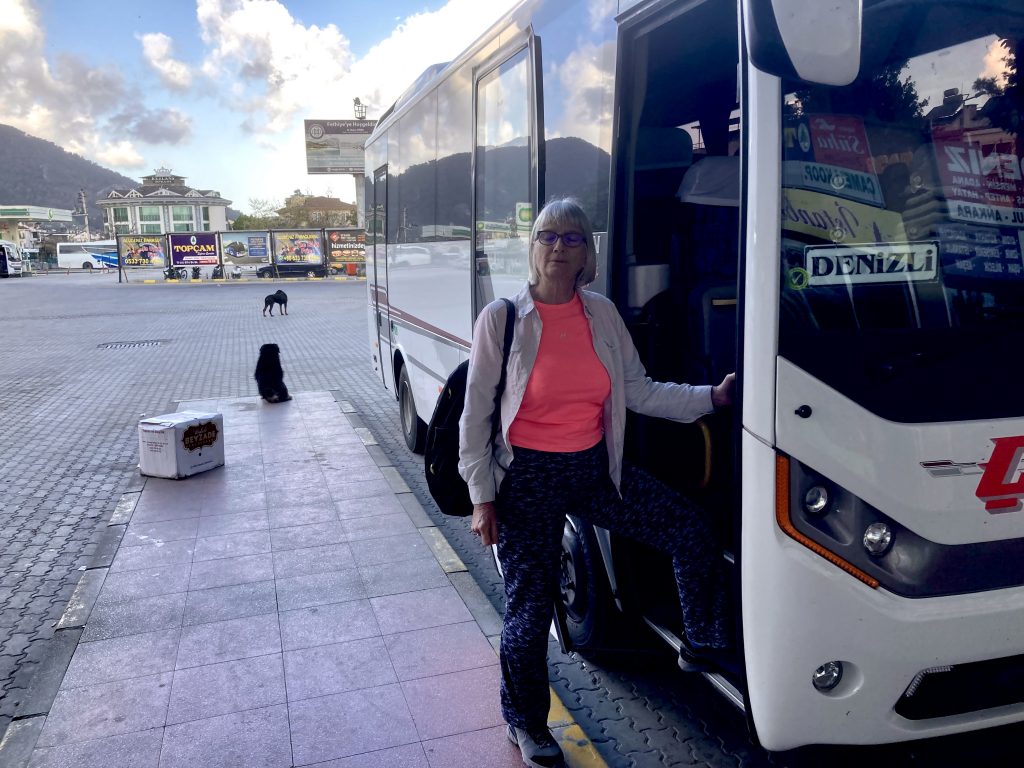
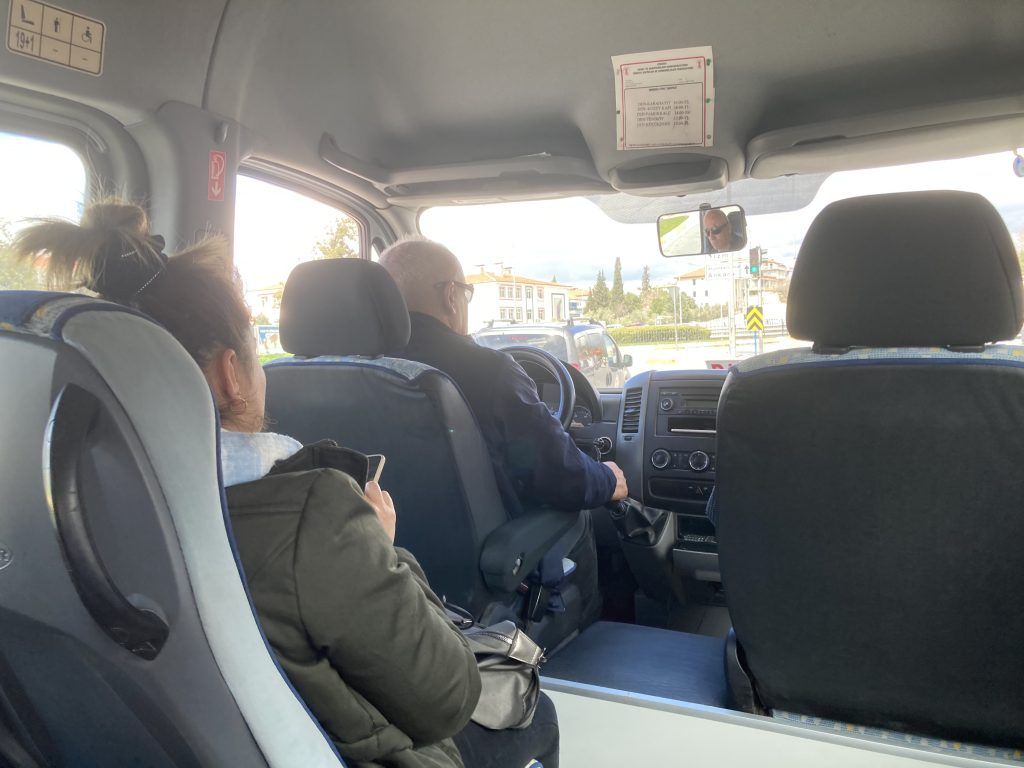
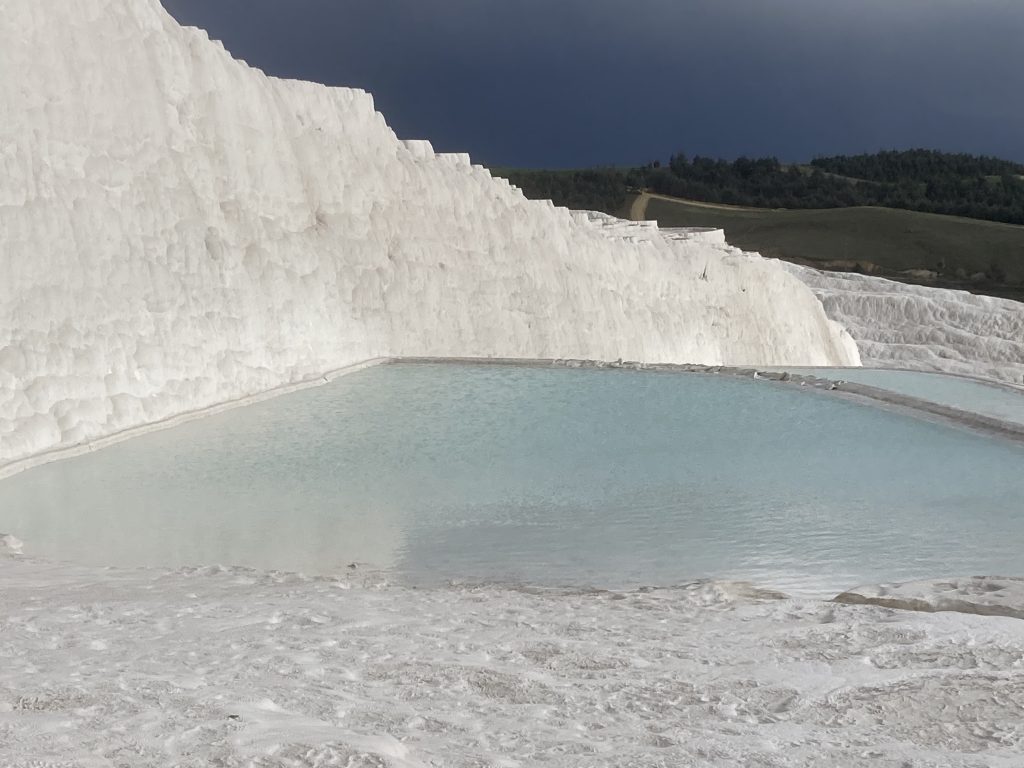
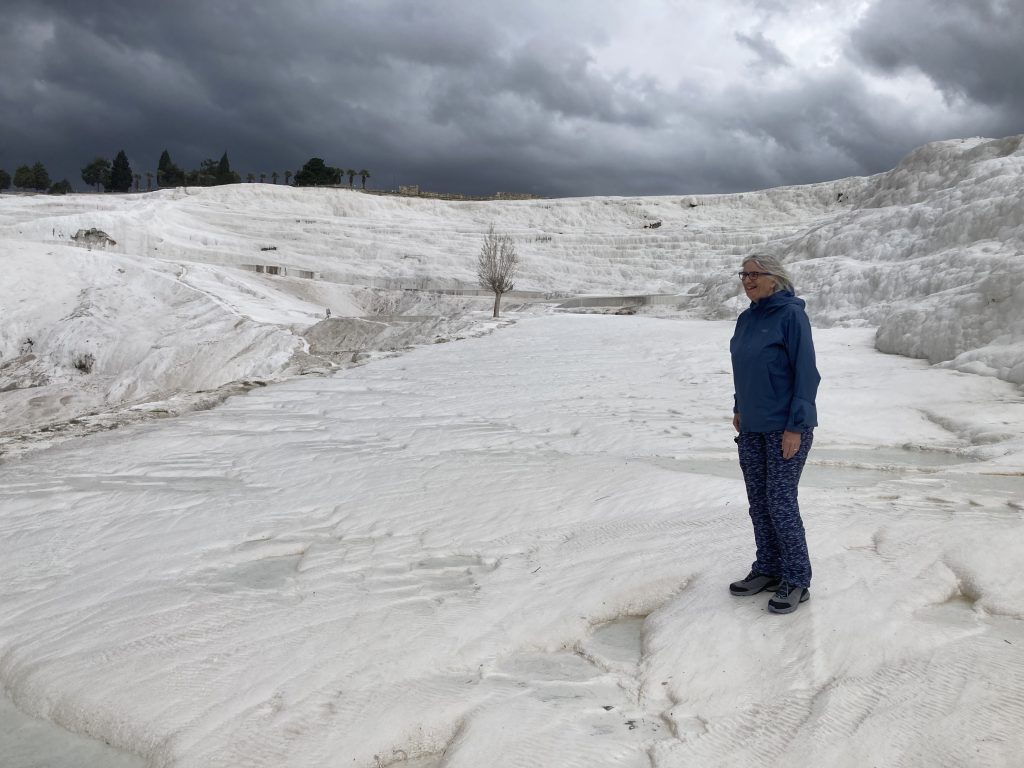
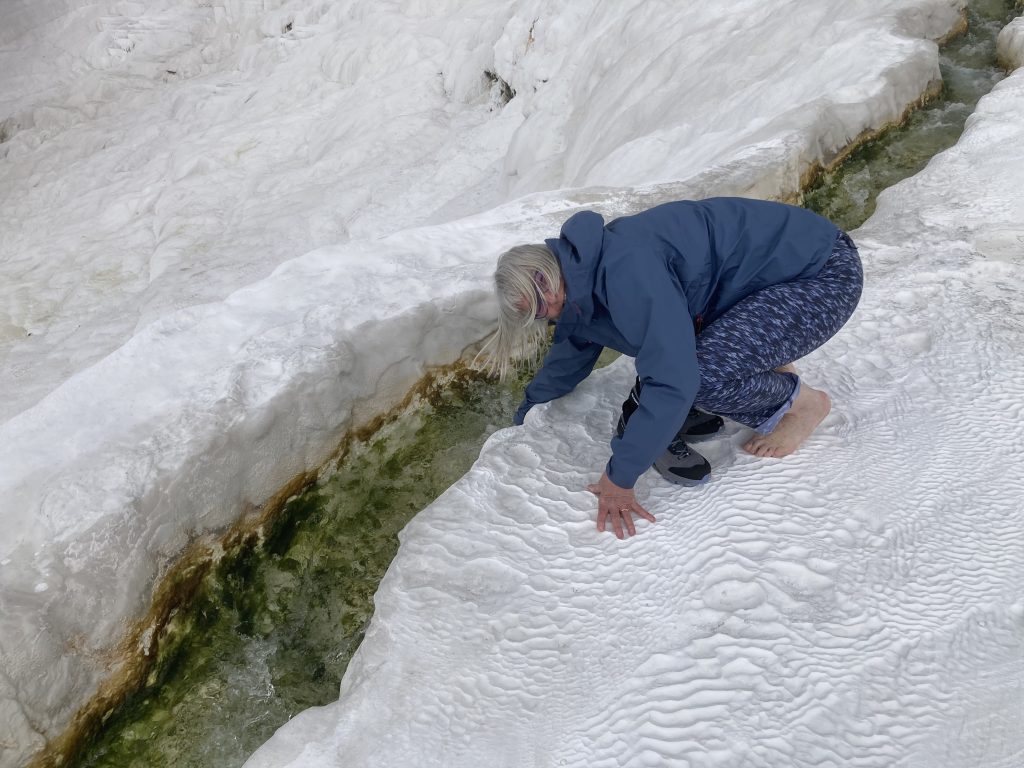
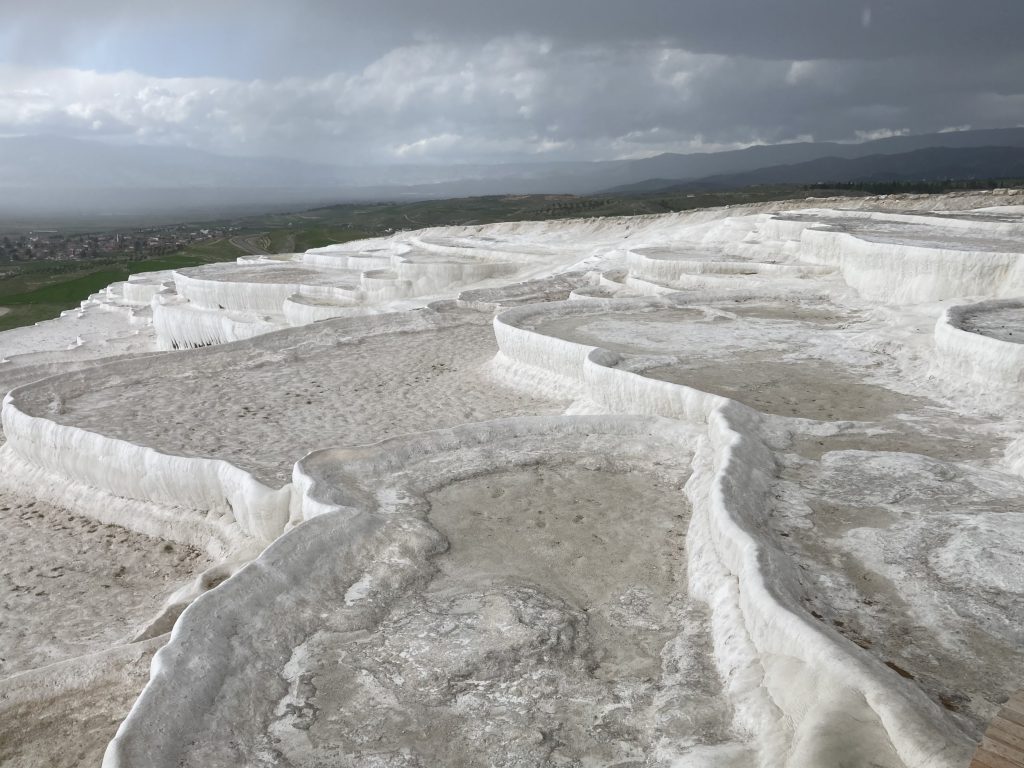
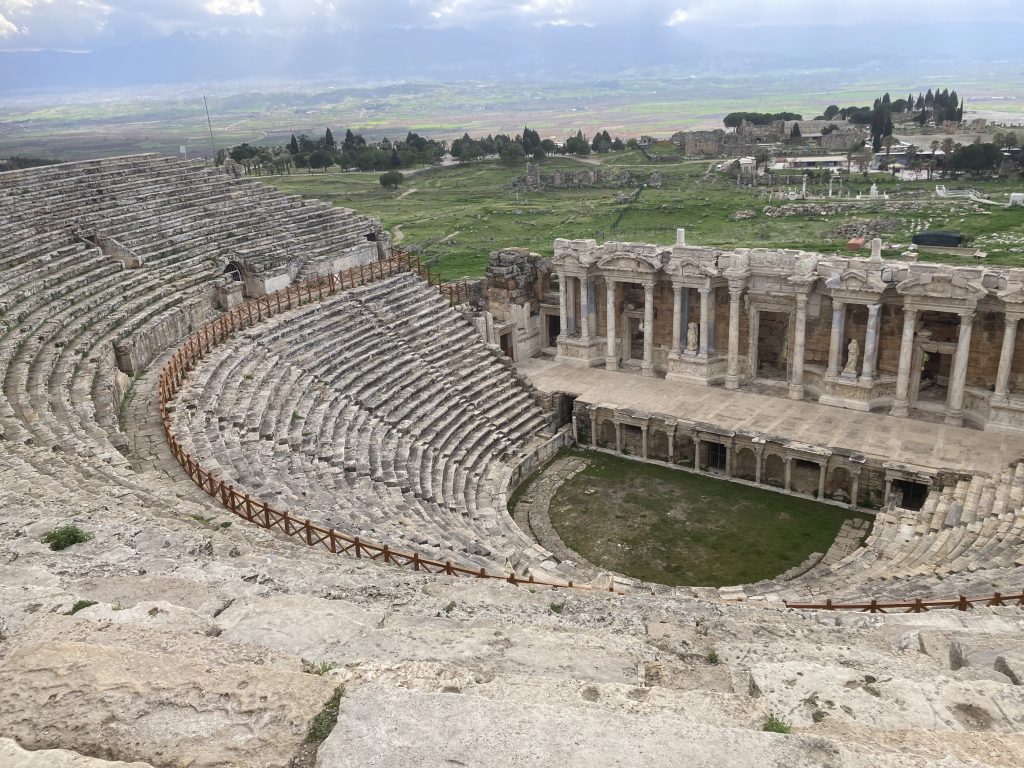
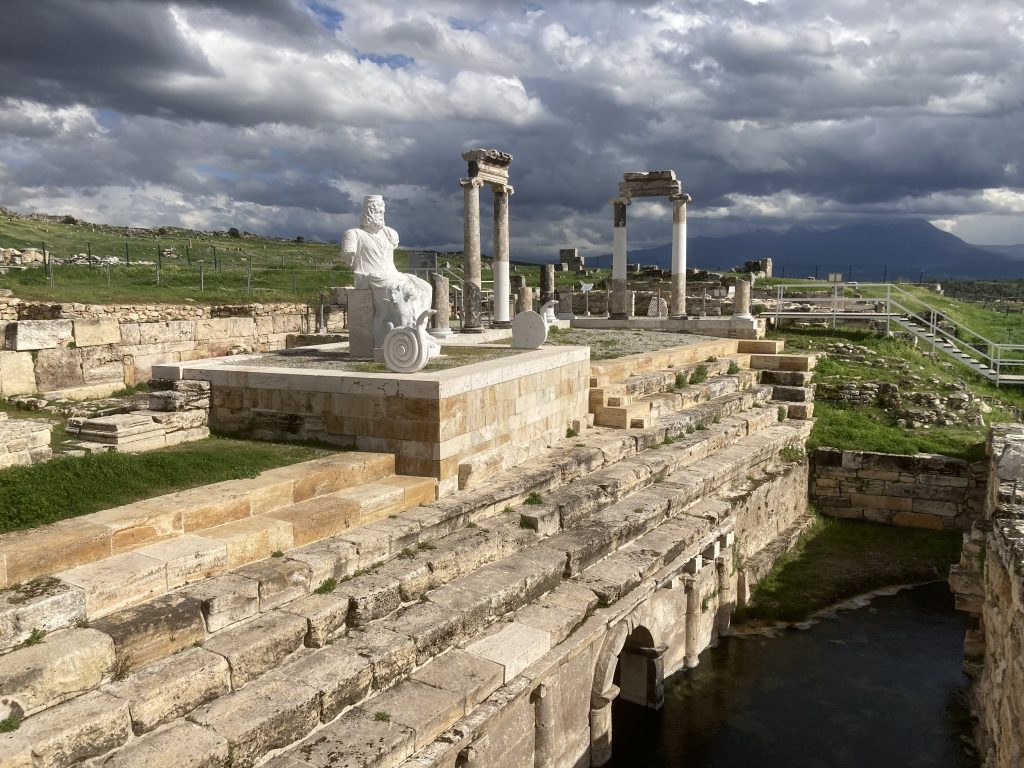
This looks a really interesting place to visit – well off the beaten tourist trail!